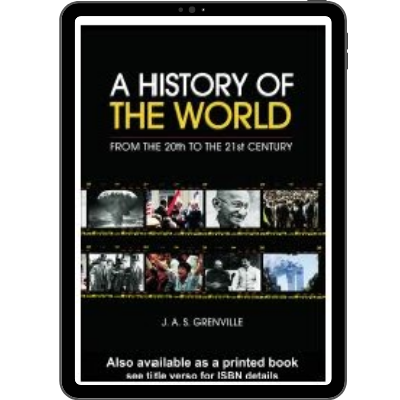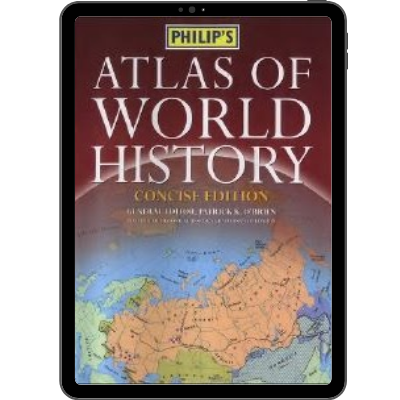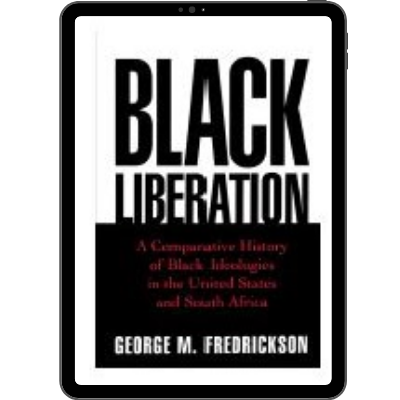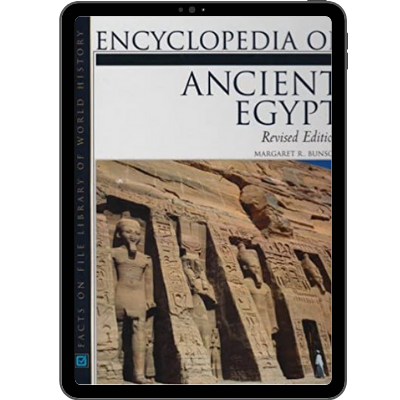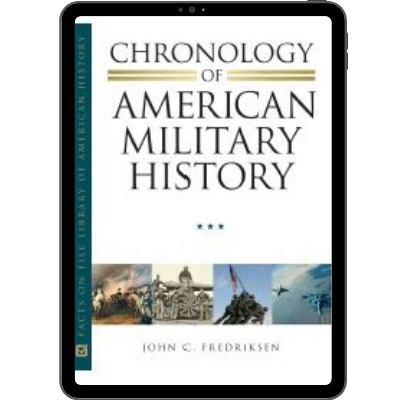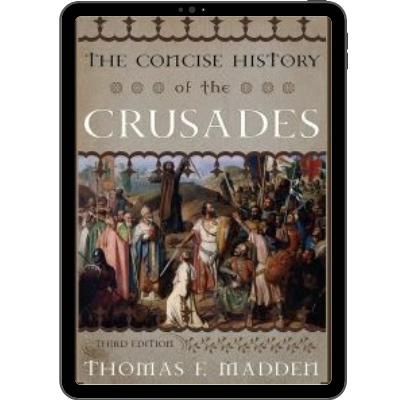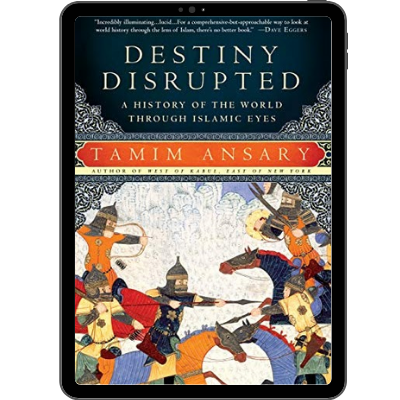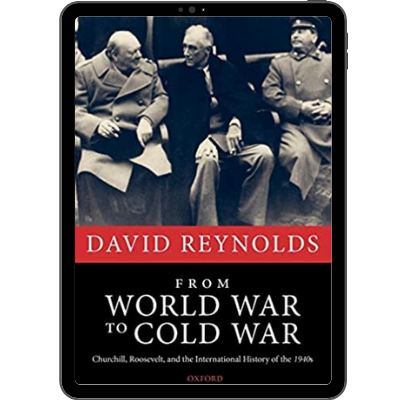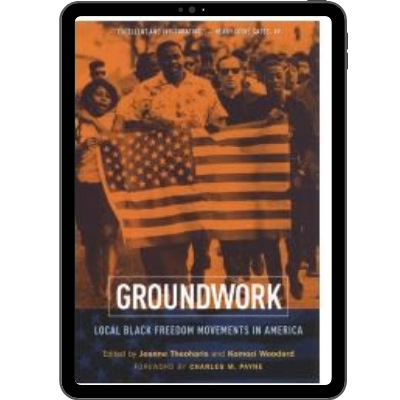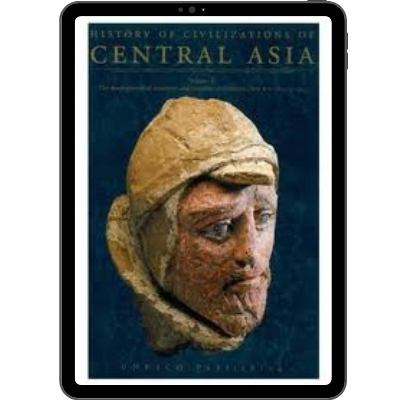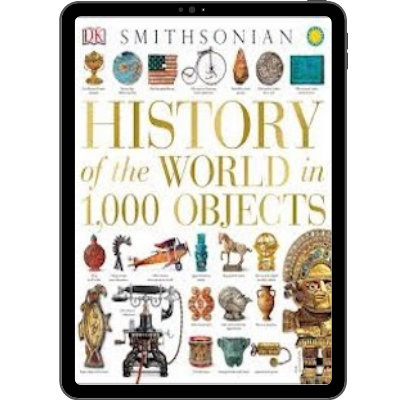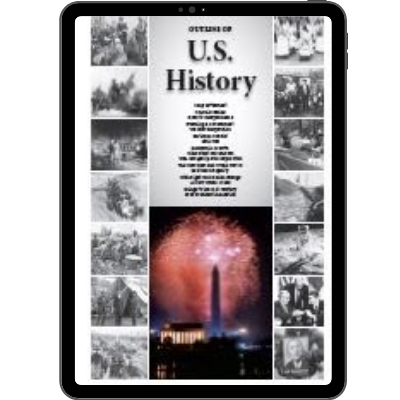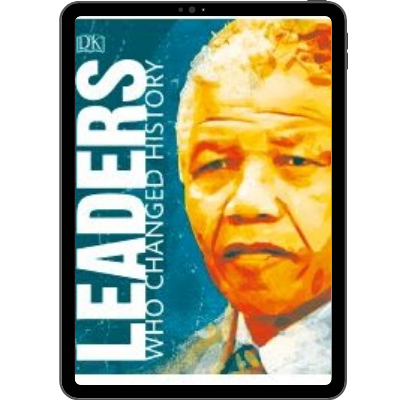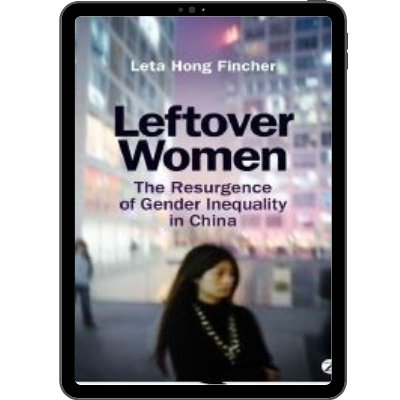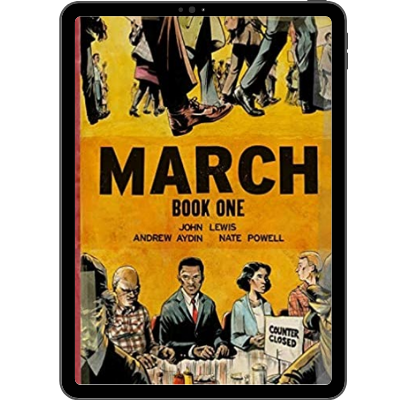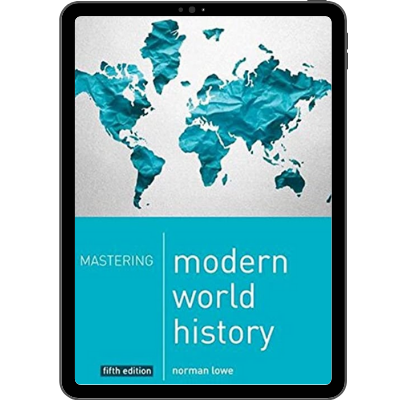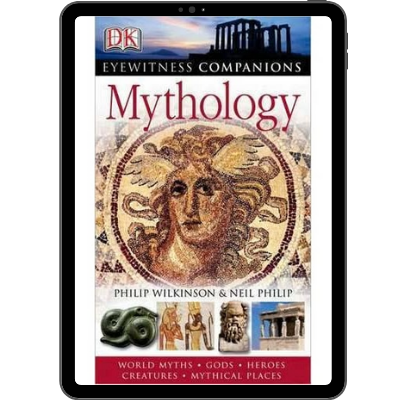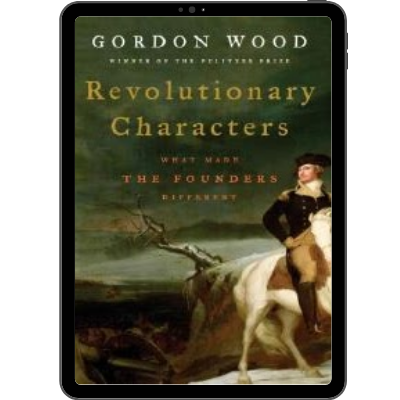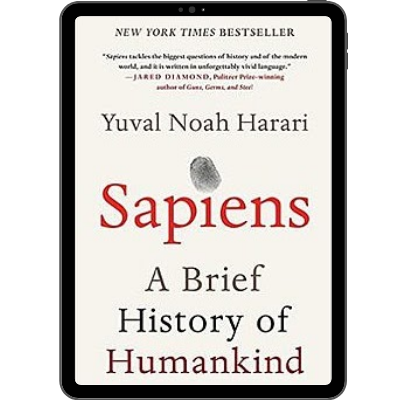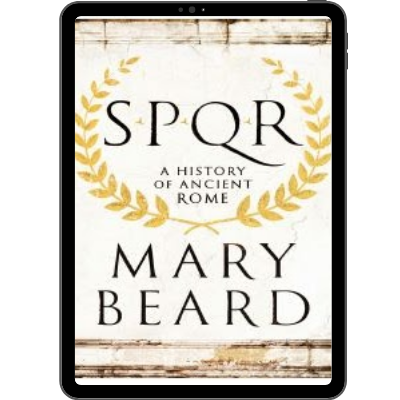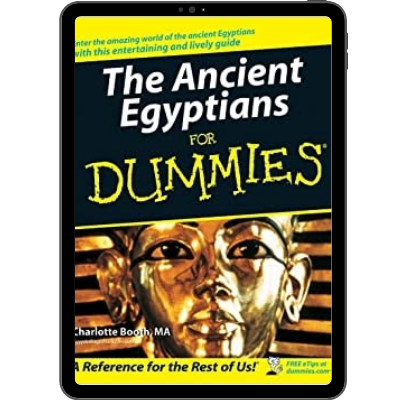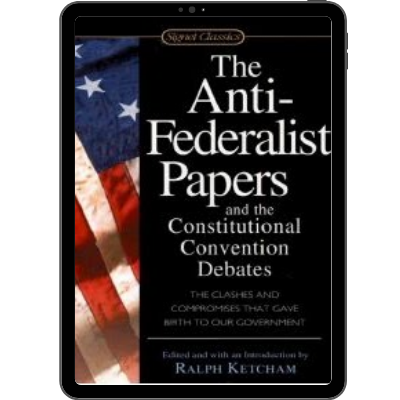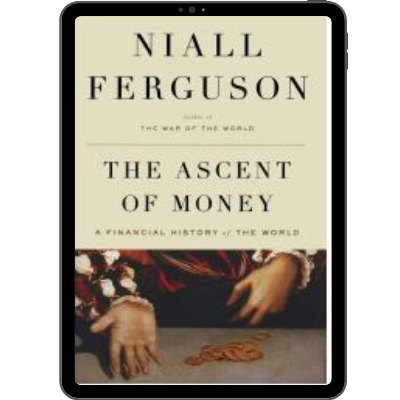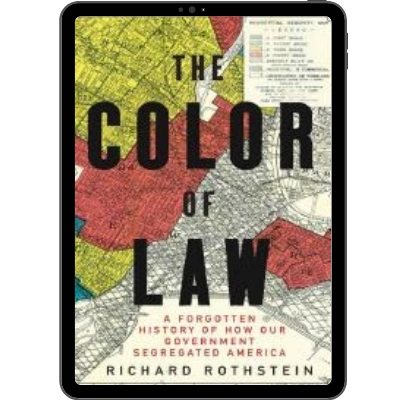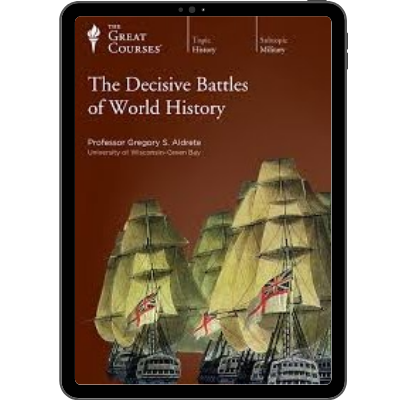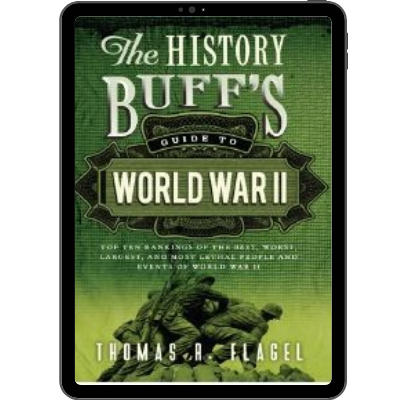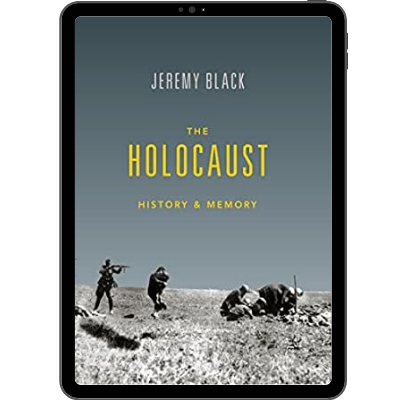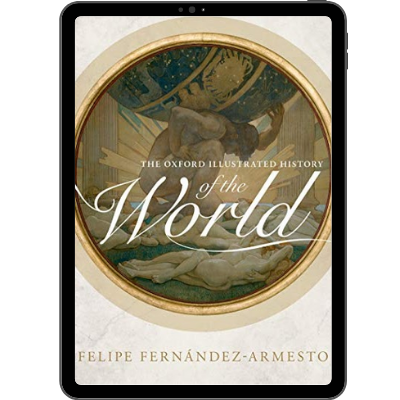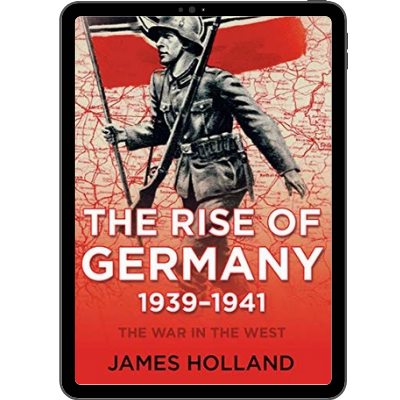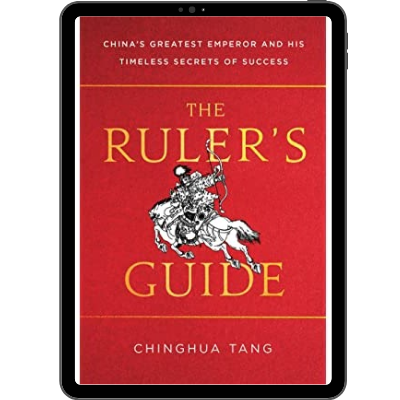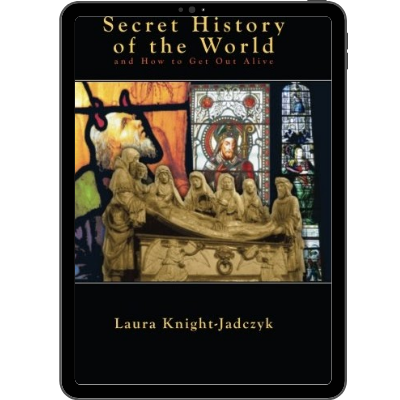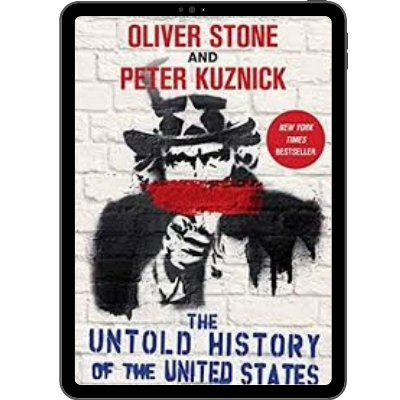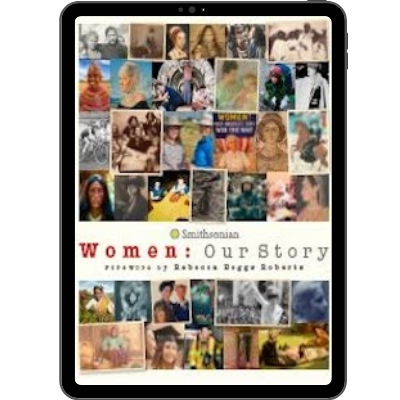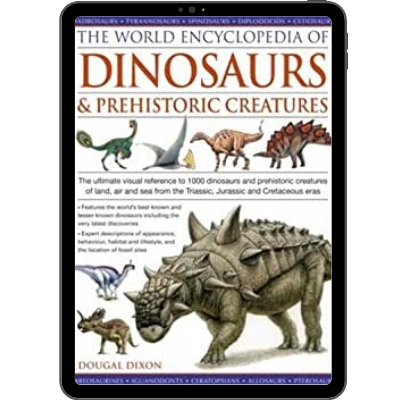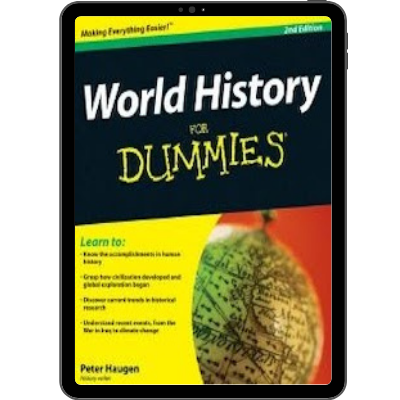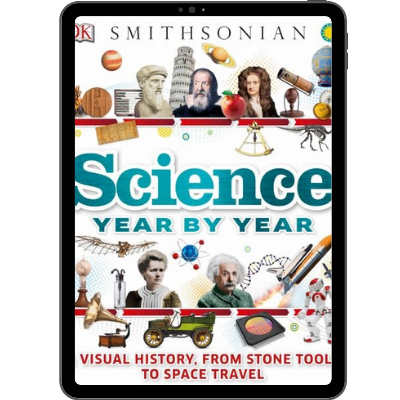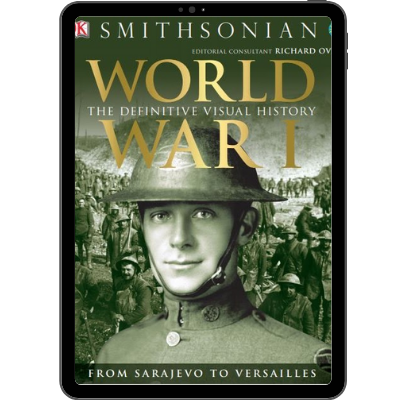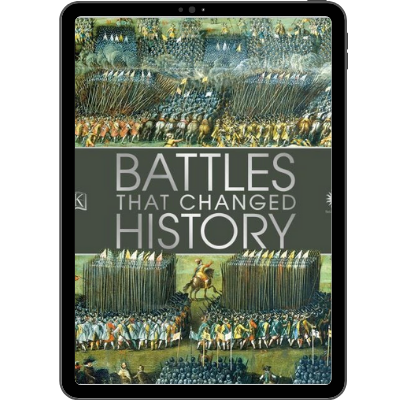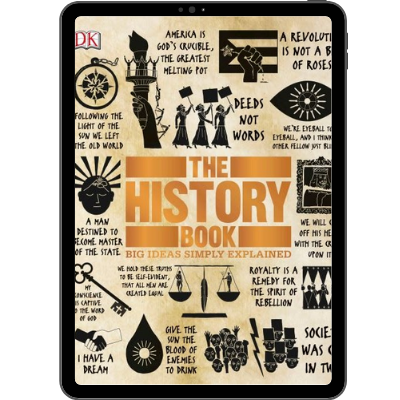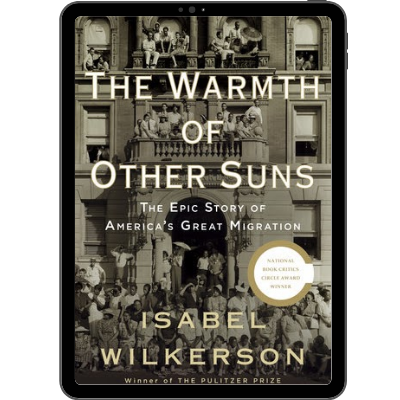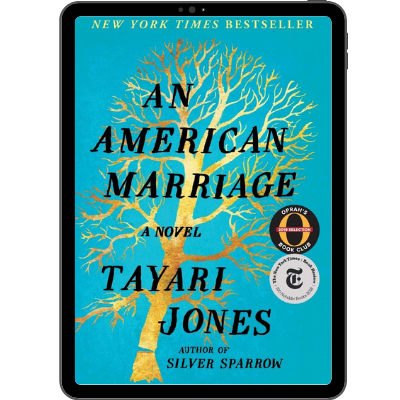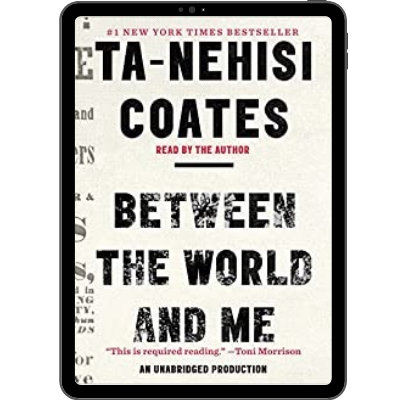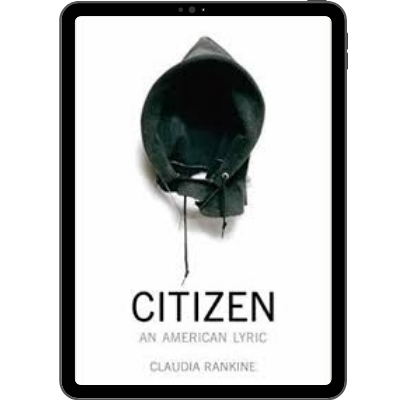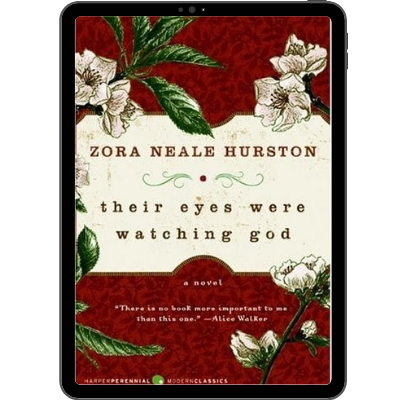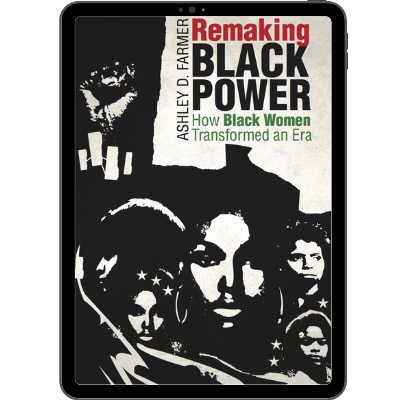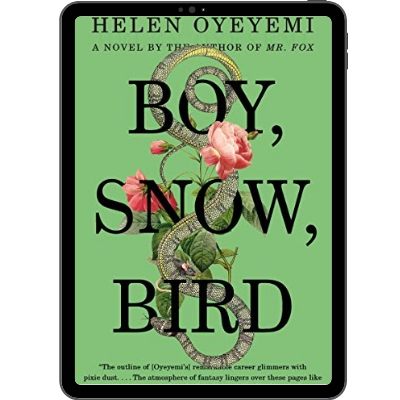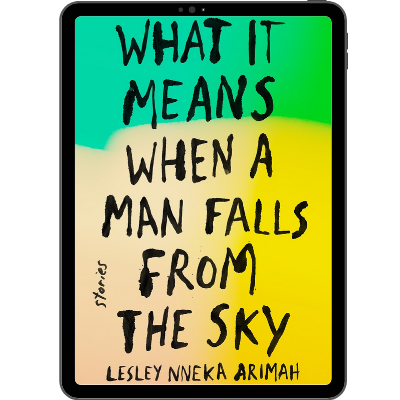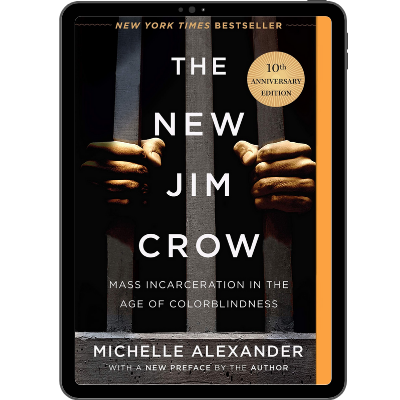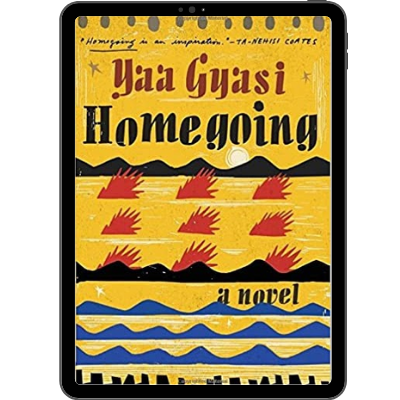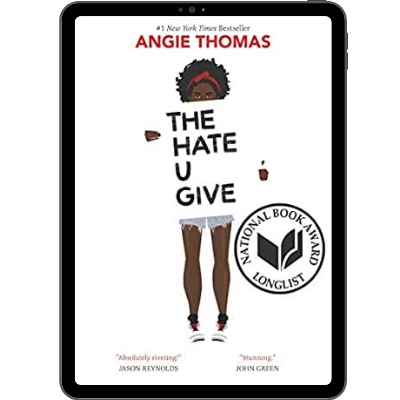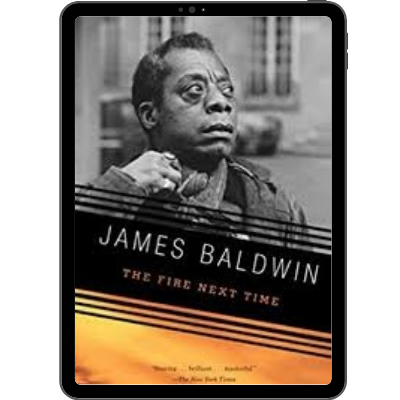HISTORY
Where would we be without inventors, philosophers, economists, politicians, explorers, and other "ideas" people? Some of our historical heroes were lone geniuses but many were influenced by other great thinkers and ideas. Full of true-life stories and famous celebrities, 100 People Who Made History contains all the people you'd expect to find, and plenty that you wouldn't! Inventors and explorers rub shoulders with political leaders, sports stars, and entertainers from all over the world. From Aristotle to Mark Zuckerberg, to Marie Curie to Pele, all areas of culture, history, industry, sports, entertainment, and more are covered. Perfect for book reports, school projects, or anytime reading to satisfy and educate curious minds. (less)
If you thought that it was a man's world, think again! 100 Women Who Made History is the exciting story of the women who changed the world, from Anne Frank to J.K. Rowling. Meet the most talented and famous women in history, from politics, science, business, and the arts, from exciting entrepreneurs to clever creative. Discover landmark moments in the lives of amazing historical women from Joan of Arc to Marie Curie, up to and including modern game-changers such as Maya Angelou, Angela Merkel, Serena Williams, and Malala Yousafzai. With beautiful photography and fun illustrations, 100 Women Who Made History is a fascinating look at the pioneering and inspiring women in history, from ancient Greece to the present day. 100 Women Who Made History is the perfect book of history for kids aged 9 and up as they discover women who left their mark. (less)
From the author of 1491—the best-selling study of the pre-Columbian Americas—a deeply engaging new history of the most momentous biological event since the death of the dinosaurs.
More than 200 million years ago, geological forces split apart the continents. Isolated from each other, the two halves of the world developed radically different suites of plants and animals. When Christopher Columbus set foot in the Americas, he ended that separation at a stroke. Driven by the economic goal of establishing trade with China, he accidentally set off an ecological convulsion as European vessels carried thousands of species to new homes across the oceans.
This authoritative work provides an essential perspective on terrorism by offering a rare opportunity for analysis and reflection at a time of ongoing violence, chilling threats, and renewed reprisals. In it, some of the best international specialists working on the subject today examine terrorism's long and complex history from antiquity to the present day and find that terror, long the weapon of the weak against the strong, is a tactic as old as warfare itself. Beginning with the Zealots of Antiquity, the contributors discuss the Assassins of the Middle Ages, the 1789 Terror movement in Europe, Bolshevik terrorism during the Russian Revolution, Stalinism, "resistance" terrorism during World War II, and Latin American revolutionary movements of the late 1960s.
For the past three decades, many history professors have allowed their biases to distort the way America’s past is taught. These intellectuals have searched for instances of racism, sexism, and bigotry in our history while downplaying the greatness of America’s patriots and the achievements of “dead white men.” As a result, more emphasis is placed on Harriet Tubman than on George Washington; more about the internment of Japanese Americans during World War II than about D-Day or Iwo Jima; more on the dangers we faced from Joseph McCarthy than those we faced from Josef Stalin.
How did a land and people of such immense diversity come together under a banner of freedom and equality to form one of the most remarkable nations in the world? Everyone from young adults to grandparents will be fascinated by the answers uncovered in James West Davidson’s vividly told A Little History of the United States. In 300 fast-moving pages, Davidson guides his readers through 500 years, from the first contact between the two halves of the world to the rise of America as a superpower in an era of atomic perils and diminishing resources.
A People's History of World War II brings the full range of human experience during World War II to life through some of the most vivid accounts and images available anywhere. This concise and accessible volume includes first-person interviews by Studs Terkel; rare archival photographs from the Office of War Information collection; propaganda comics from Theodore Geisel (Dr. Seuss); narratives of wartime experiences from writers including historian Howard Zinn, civil rights activist Robert L. Carter, and celebrated French author Marguerite Duras; and selections from the writings of some of the world’s leading historians of the war, including John Dower, Philippe Burrin, David Wyman, and Eric Hobsbawm.
Agony and Eloquence is the story of the greatest friendship in American history and the revolutionary times in which it was made, ruined, and finally renewed. In the wake of Washington’s retirement, longtime friends Thomas Jefferson and John Adams came to represent the opposing political forces struggling to shape America’s future. Adams’s victory in the presidential election of 1796 brought Jefferson into his administration—but as an unlikely and deeply conflicted vice president. The bloody Republican revolution in France finally brought their political differences to a bitter pitch. In Mallock’s take on this fascinating period, French foreign policy and revolutionary developments—from the fall of the Bastille to the fall of the Jacobins and the rise of Napoleon—form a disturbing and illuminating counterpoint to events, controversies, individuals, and relationships in Philadelphia and Washington.
A follow on from successful publication "The History of the World in the 20th Century", this edition has been thoroughly updated and includes discussions on 9/11 and the second Gulf War and takes into account the latest historical research.A comprehensive survey of the key events and personalities of this period throughout the world it includes discussion on topics such as: - the rivalry between European nations from 1900-1914 - the Depression and the rise of Fascism during the 1920s and 1930s - the global impact of the Cold War - decolonization and its effects - the continuing conflict in the Middle East. Providing a fascinating and authoritative account of the world since 1900, "A History of the World from the 20th to the 21st Century" is essential reading for general readers and students of world history alike.
In A Short History of the United States, National Book Award winner Robert V. Remini offers a much-needed, concise history of our country. This accessible and lively volume contains the essential facts about the discovery, settlement, growth, and development of the American nation and its institutions, including the arrival and migration of Native Americans, the founding of a republic under the Constitution, the emergence of the United States as a world power, the outbreak of terrorism here and abroad, the Obama presidency, and everything in between.
This atlas presents the story of civilization in physical setting. Specially designed to help the reader visualize great historical themes and decisive moments. It combines 400 specially drawn maps depicting the scope of these events. The atlas features 135 double-page spreads, each of which potrays key develppments in a world region over a specific period of time. Each spread features maps together with complementary text discussing and explaining the historical, political, geographical, social, cultural and relgious themes behind each topic.
When George M. Fredrickson published White Supremacy: A Comparative Study in American and South African History, he met universal acclaim. David Brion Davis, writing in The New York Times Book Review, called it "one of the most brilliant and successful studies in comparative history ever written." The book was honored with the Ralph Waldo Emerson Prize, the Merle Curti Award, and a jury nomination for the Pulitzer Prize. Now comes the sequel to that acclaimed work.
In Black Liberation, George Fredrickson offers a fascinating account of how blacks in the United States and South Africa came to grips with the challenge of white supremacy. He reveals a rich history--not merely of parallel develpments, but of an intricate, transatlantic web of influences and cross-fertilization. He begins with early moments of hope in both countries--Reconstruction in the United States, and the liberal colonialism of British Cape Colony--when the promise of suffrage led educated black elites to fight for color-blind equality. A rising tide of racism and discrimination at the turn of the century, however.
Although the civilization along the Nile in ancient Egypt had long fascinated specialist and lay readers alike, Facts On File's Encyclopedia of Ancient Egypt was the first single-volume reference to this extraordinary culture, bringing together a wealth of information. This expanded and revised edition now covers the period from Egypt's predynastic era around 3200 B.C.E. to the suicide of Cleopatra and Mark Antony in the face of Roman conquest in 30 B.C.E. More than 2,200 alphabetically arranged entries provide accessible and concise information on all aspects of ancient Egypt, from its rulers, gods and goddesses, and cities to artistic themes, religious beliefs, writing, and daily life.
Designed for both browsing and ready reference, Encyclopedia of Ancient Egypt, Revised Edition is a concise, accessible guide that will appeal to student and general readers alike.
Beginning with the war for America's independence more than 230 years ago up to and including the regional conflicts of the 21st century, Chronology of American Military History is a new three-volume panoramic reference covering the entire length of U.S. military history. Nearly 5,000 chronological, day-by-day entries allow students to follow events as they unfold, often in day-by-day detail. Each event is preceded with a standard topical marker to help readers quickly locate the subjects they want to follow. Scattered throughout the text are more than 150 feature boxes highlighting key military figures, and more than 200 black-and-white illustrations, photographs, and maps complement the text.
What is the relationship between the medieval crusades and the problems of the modern Middle East? Were the crusades the Christian equivalent of Muslim jihad? In this sweeping yet crisp history, Thomas F. Madden offers a brilliant and compelling narrative of the crusades and their contemporary relevance. Placing all of the major crusades within their medieval social, economic, religious, and intellectual environments, Madden explores the uniquely medieval world that led untold thousands to leave their homes, families, and friends to march in Christ’s name to distant lands. From Palestine and Europe's farthest reaches, each crusade is recounted in a clear, concise narrative. The author gives special attention as well to the crusades’ effects on the Islamic world and the Christian Byzantine East.
The Western narrative of world history largely omits a whole civilization. Destiny Disrupted tells the history of the world from the Islamic point of view, and restores the centrality of the Muslim perspective, ignored for a thousand years.
In Destiny Disrupted, Tamim Ansary tells the rich story of world history as it looks from a new perspective: with the evolution of the Muslim community at the center. His story moves from the lifetime of Mohammed through a succession of far-flung empires, to the tangle of modern conflicts that culminated in the events of 9/11. He introduces the key people, events, ideas, legends, religious disputes, and turning points of world history, imparting not only what happened but how it is understood from the Muslim perspective.
Dog Heroes of September 11th -- A Tribute to America’s Search and Rescue Dogs, now in its Tenth Anniversary second edition, is the first and only major publication to salute the canines that served our nation in the recovery missions following the terrorists’ strikes on America. In his foreword to this edition, former New York City mayor Rudolph Giuliani says, “No American could be unmoved by the stories and images of these dogs and their handlers….Their journeys, as told in these pages, reinforce our resolve to persevere, rebuild and keep our nation safe and strong.”
The 1940s was probably the most dramatic and decisive decade of the 20th century. This volume explores the Second World War and the origins of the Cold War from the vantage point of two of the great powers of that era, Britain and the USA, and of their wartime leaders, Churchill and Roosevelt. It also looks at their chequered relations with Stalin and at how the Grand Alliance crumbled into an undesired Cold War.
Over the last several years, the traditional narrative of the civil rights movement as largely a southern phenomenon, organized primarily by male leaders, that roughly began with the 1955 Montgomery Bus Boycott and ended with the Voting Rights Act of 1965, has been complicated by studies that root the movement in smaller communities across the country. These local movements had varying agendas and organizational development, geared to the particular circumstances, resources, and regions in which they operated. Local civil rights activists frequently worked in tandem with the national civil rights movement but often functioned autonomously from—and sometimes even at odds with—the national movement.
From the watch Napoleon used to synchronize with his generals at Waterloo and Chinese David vases believed to be the oldest example of blue and white porcelain to the US Constitution and the Mayan Dresden codex, the oldest book written in the Americas, History of the World in 1,000 Objects provides a completely fresh perspective on the history of the world.
With objects revealing how our ancestors lived, what they believed and valued, and how these items helped shape civilization, History of the World in 1,000 Objects contains a treasure trove of human creativity from earliest cultures to the present day. Objects are grouped chronologically, under key themes, from art to the history of technology, and together help paint a unique picture that provides detailed insight into each culture.
Outline of U.S. History from Early Settlement to the 2008 Presidential Election goes in-depth in these areas of history:Early SettlementColonial PeriodRoad to IndependenceForming a GovernmentWestward ExpansionSectional ConflictCivil WarEconomic GrowthDiscontent and ReformWar, Prosperity, and DepressionThe New Deal and World War IIPostwar ProsperityCivil Rights and Social ChangeA New World OrderBridge to the 21st Century2008 Presidential Election
Comprehensive in its scope and depth, Leaders Who Changed History profiles leaders from all walks of life - kings, queens, and political leaders; military leaders; religious icons, revolutionaries, and business leaders. Covering political masterminds and military geniuses such as Alexander the Great or Genghis Khan, great kings, queens, and rulers like Elizabeth I or Cleopatra, icons of religion and rebellion from Muhammad to Mohandas Gandhi to Emmeline Pankhurst, and inspirational captains of industry, Leaders Who Changed History explores and explains the groundbreaking contributions made by these men and women and their legacies.
A century ago, Chinese feminists fighting for the emancipation of women helped spark the Republican Revolution, which overthrew the Qing empire. After China's Communist revolution of 1949, Chairman Mao famously proclaimed that "women hold up half the sky." In the early years of the People's Republic, the Communist Party sought to transform gender relations with expansive initiatives such as assigning urban women jobs in the planned economy. Yet those gains are now being eroded in China's post-socialist era. Contrary to many claims made in the mainstream media, women in China have experienced a dramatic rollback of many rights and gains relative to men.
Congressman John Lewis (GA-5) is an American icon, one of the key figures of the civil rights movement. His commitment to justice and nonviolence has taken him from an Alabama sharecropper's farm to the halls of Congress, from a segregated schoolroom to the 1963 March on Washington, and from receiving beatings from state troopers to receiving the Medal of Freedom from the first African-American president.
Now, to share his remarkable story with new generations, Lewis presents March, a graphic novel trilogy, in collaboration with co-writer Andrew Aydin and New York Times best-selling artist Nate Powell (winner of the Eisner Award and LA Times Book Prize finalist for Swallow Me Whol.
The fourth edition of this best-selling coursebook is designed to help college and first year university students. It requires no previous knowledge and covers international relations and major conflicts during the Twentieth Century, as well as the internal affairs of the great powers - USA, Russia/USSR and China. Coverage is brought right up to the present, with sections on September 11th and the war against global terrorism, the war in Iraq, global warming and the AIDS/HIV pandemic.
World myths, gods, heroes, creatures and mythical places revealed
"Eyewitness Companions offer an essential reference library, perfect for novices or anyone who just wants to know more about their favourite pastime." Heyday
Undertake a quest of discovery – and learn about some of the greatest myths and characters the world has ever known – without leaving your armchair.
Get the story behind famous tales, from Greek mythology to the lesser known myths from the Americas, Oceania and Africa. Enjoy timeless epics vividly retold and beautifully illustrated, from creation myths to tales of heroism. Plus, come face-to-face with gods and monsters in the who’s who of characters from mythmaking cultures.
In this brilliantly illuminating group portrait of the men who came to be known as the Founding Fathers, the incomparable Gordon Wood has written a book that seriously asks, What made these men great, and shows us, among many other things, just how much character did in fact matter. The life of each, Washington, Adams, Jefferson, Franklin, Hamilton, Madison, Paine, is presented individually as well as collectively, but the thread that binds these portraits together is the idea of character as a lived reality. They were members of the first generation in history that was self-consciously self-made men who understood that the arc of lives, as of nations, is one of moral progress.
What makes us brilliant? What makes us deadly? What makes us Sapiens? Yuval Noah Harari challenges everything we know about being human in the perfect read for these unprecedented times.
Earth is 4.5 billion years old. In just a fraction of that time, one species among countless others has conquered it: us.
In this bold and provocative book, Yuval Noah Harari explores who we are, how we got here and where we’re going.
In SPQR, an instant classic, Mary Beard narrates the history of Rome "with passion and without technical jargon" and demonstrates how "a slightly shabby Iron Age village" rose to become the "undisputed hegemon of the Mediterranean" (Wall Street Journal). Hailed by critics as animating "the grand sweep and the intimate details that bring the distant past vividly to life" (Economist) in a way that makes "your hair stand on end" (Christian Science Monitor) and spanning nearly a thousand years of history, this "highly informative, highly readable" (Dallas Morning News) work examines not just how we think of ancient Rome but challenges the comfortable historical perspectives that have existed for centuries. With its nuanced attention to class, democratic struggles, and the lives of entire groups of people omitted from the historical narrative for centuries, SPQR will to shape our view of Roman history for decades to come.
Unravel the history behind of one of the most fascinating ancient civilisations with this engaging, entertaining and educational guide to the ancient Egyptians. With a complete rundown of ancient Egyptian history and culture alongside insights in to the everyday lives of the Egyptians, you’ll discover how they kept themselves entertained, the gory details of mummification, the amazing creation of the pyramids, the deciphering of hieroglyphs and much more.
Should the members of the government be elected by direct vote of the people?
Should the government be headed by a single executive, and how powerful should that executive be? Should immigrants be allowed into the United States?
How should judges be appointed?
What human rights should be safe from government infringement?
In 1787, these important questions and others were raised by such statesmen as Patrick Henry and John DeWitt as the states debated the merits of the proposed Constitution. Along with The Federalist Papers, this invaluable book documents the political context in which the Constitution was born.
Niall Ferguson follows the money to tell the human story behind the evolution of our financial system, from its genesis in ancient Mesopotamia to the latest upheavals on what he calls Planet Finance. What?s more, Ferguson reveals financial history as the essential backstory behind all history, arguing that the evolution of credit and debt was as important as any technological innovation in the rise of civilization. As Ferguson traces the crisis from ancient Egypt?s Memphis to today?s Chongqing, he offers bold and compelling new insights into the rise? and fall?of not just money but Western power as well.
Widely heralded as a “masterful” (Washington Post) and “essential” (Slate) history of the modern American metropolis, Richard Rothstein’s The Color of Law offers “the most forceful argument ever published on how federal, state, and local governments gave rise to and reinforced neighborhood segregation” (William Julius Wilson). Exploding the myth of de facto segregation arising from private prejudice or the unintended consequences of economic forces, Rothstein describes how the American government systematically imposed residential segregation: with undisguised racial zoning; public housing that purposefully segregated previously mixed communities; subsidies for builders to create whites-only suburbs; tax exemptions for institutions that enforced segregation; and support for violent resistance to African Americans in white neighborhoods. A groundbreaking,
Discover the military conflicts that have had the greatest impact in shifting the direction of historical events and shaping our world in The Decisive Battles of World History. Covering nearly 4,000 years, this course explores more than three dozen history-making military engagements, from the landmark battles of the Western world to their counterparts across Asia, India, and the Middle East.
Starring Gregory S.
Did you know that neither Hitler nor Stalin graduated from high school? Or that the Allies often employed teenage girls as spies? In The History Buff's Guide to World War II, Thomas R. Flagel leaves no stone unturned as he presents dozens of top ten lists that examine the politics, leaders, and battles of the Second World War. From Hitler to Stalin, battleground to home front, Flagel's compelling analysis and attention to often-overlooked information ensures a surprise on every page for even the most dedicated World War II buff. This fresh, impossible-to-put-down book puts a new perspective on one of the most heavily researched wars of all time and is sue to enthrall expert and amateur historians alike.
Do You Think You Know World War II?
Brilliant and wrenching, The Holocaust: History and Memory tells the story of the brutal mass slaughter of Jews during World War II and how that genocide has been remembered and misremembered ever since. Taking issue with generations of scholars who separate the Holocaust from Germany's military ambitions, historian Jeremy M. Black demonstrates persuasively that Germany's war on the Allies was entwined with Hitler's war on Jews. As more and more territory came under Hitler's control, the extermination of Jews became a major war aim, particularly in the east, where many died and whole Jewish communities were exterminated in mass shootings carried out by the German army and collaborators long before the extermination camps were built. Rommel's attack on Egypt was a stepping stone to a larger goal—the annihilation of 400,000 Jews living in Palestine.
The Oxford Illustrated History of the World encompasses the whole span of human history. It brings together some of the world's leading historians, under the expert guidance of Felipe Fernandez-Armesto, to tell the 200,000-year story of our world, from the emergence of homo sapiens through to the twenty-first century: the environmental convulsions; the interplay of ideas (good and bad); the cultural phases and exchanges; the collisions and collaborations in politics; the successions of states and empires; the unlocking of energy; the evolutions of economies; the contacts, conflicts, and contagions that have all contributed to making the world we now inhabit.
James Holland, one of the leading young historians of World War II, has spent over a decade conducting new research, interviewing survivors, and exploring archives that have never before been so accessible to unearth forgotten memoirs, letters, and official records.
In The Rise of Germany 1938–1941, Holland draws on this research to reconsider the strategy, tactics, and economic, political, and social aspects of the war. The Rise of Germany is a masterful book that redefines our understanding of the opening years of World War II. Beginning with the lead-up to the outbreak of war in 1939 and ending in the middle of 1941 on the eve of Operation Barbarossa, the Nazi invasion of Russia, this book is a landmark history of the war on land, in the air, and at sea.
Tang Taizong is arguably the greatest Emperor in Chinese history. In Asia, many historians rank him with such rulers as Augustus, Genghis Khan, and Napoleon. When he founded the Tang dynasty, Taizong was only twenty-eight years old, and his chief accomplishments were on the battlefield, where he personally slew 1,000 of the enemy. Ultimately, he would defeat the descendants of Attila the Hun, open up the Silk Road trading route, create a golden age of prosperity and cosmopolitan culture, preside over a society in which women enjoyed higher status, and allow Christianity and Islam into China for the first time as well as introduce Buddhism into Tibet. His dynasty would last 300 years.
Previously published as Ancient Science, Secret History contains 150 pages of new material. It is the definitive edition in a new format. The Secret History of The World and How To Get Out Alive is the definitive book of the real answers where Truth is more fantastic than fiction. Laura Knight-Jadczyk, wife of internationally known theoretical physicist, Arkadiusz Jadczyk, an expert in hyperdimensional physics, draws on science and mysticism to pierce the veil of reality. Due to the many threats on her life from agents and agencies known and unknown, Laura left the United States to live in France, where she is worked closely with Patrick Riviere, student of Eugene Canseliet, the only disciple of the legendary alchemist Fulcanelli.
The notion of American exceptionalism, dating back to John Winthrop’s 1630 sermon aboard the Arabella, still warps Americans’ understanding of their nation’s role in the world. Most are loathe to admit that the United States has any imperial pretensions. But history tells a different story as filmmaker Oliver Stone and historian Peter Kuznick reveal in this riveting account of the rise and decline of the American empire. They trace the American empire through the bloody U.S. suppression of the Filipino struggle for independence; the establishment of U.S. financial hegemony via World War I; the repeated U.S. interventions, covert operations, and wars in Latin America, Asia, and the Middle East; the transformation of America into a prying national security state; the accumulation of vast fortunes by the wealthiest Americans; and troubling assaults on U.S. constitutional liberties.
A journalist by trade, who now suffers from an immune deficiency developed while researching this book, presents personal accounts of what happened to the people of Belarus after the nuclear reactor accident in 1986, and the fear, anger, and uncertainty that they still live with. Chernobyl, the acclaimed HBO miniseries (winner of ten Emmy Awards and two Golden Globe Awards), is based in large part on the personal recollections from Voices from Chernobyl.
Packed full of evocative images, this gloriously illustrated book reveals the key events in women's history--from early matriarchal societies through women's suffrage, the Suffragette movement, 20th-century feminism, and gender politics, to recent movements such as #MeToo and International Women's Day--and the key role women have had in shaping our past. Learn about the everyday lives of women through the ages as well as the big names of women's history--powerful, inspirational, and trailblazing women such as Cleopatra, Florence Nightingale, Emmeline Pankhurst, Eva Peron, and Rosa Parks--and discover the unsung contributions of lesser-known women who have changed the world, and the "forgotten" events of women's history.
Want to know more about global history? This concise guide explains in clear detail all the major players and events that have made the world what it is today. Covering the entirety of human history, this comprehensive resource highlights important developments in everything from religion and science to art and war ― giving you an understanding of how the 21st-century world came to be.
Packed with fascinating discoveries and facts, this visual reference takes kids on a fantastic journey through time, from stone tools and simple machines to space travel and robots. Easy-to-follow illustrated timelines of pivotal scientific developments explore the ideas, experiments, and technologies that have shaped our daily lives over the past 3 million years. With more than 1,200 images, in-depth explanations of key inventors and innovations, quotes from groundbreaking scientists like Marie Curie, and stunning «moment in time» images of key events such as the first human landing on the moon.
2014 marks the centennial of the start of World War I — DK will mark the occasion with the publication of World War I: The Definitive Visual Guide, a vividly illustrated, in-depth account of the Great War.
Written by historian R. G. Grant, and created by DK's award-winning editorial and design team, World War I charts the developments of the war from a global perspective. Using illustrated timelines, detailed maps, and personal accounts, readers will see the oft-studied war in a new light. Key episodes are set clearly in the wider context of the conflict, in-depth profiles look at the key generals and political leaders, and full-color photo galleries showcase the weapons, inventions, and new technologies that altered the course of history.
This illustrated guide to history's most famous battles explores military history from ancient battles to the American Civil War, World War I, World War II, the Cold War, and beyond. Featuring stunning illustrations and in-depth analysis, this military history book uses maps, paintings, and photographs to reveal the stories behind more than 90 of the most important battles ever to take place. From medieval battles and great naval battles to the era of high-tech air battles, key wars and campaigns are analyzed in detail--the weapons, the soldiers, the military strategy, and the fateful decisions that led to glorious victories and crushing defeats. Famous military leaders are profiled, including Alexander the Great, Joan of Arc, Napoleon, Rommel, and others, and crucial arms, armor, and equipment are explained.
The History Book is a fascinating journey through the most significant events in history and the big ideas behind each one, from the dawn of civilization to the lightning-paced culture of today. One hundred crystal-clear articles explore the Law Code of Hammurabi, the Renaissance, the American Revolution, World War II, and much, much more, bringing the events and people of history to life. As part of DK's award-winning Big Ideas Simply Explained series, The History Book uses infographics and images to explain key ideas and themes. Biographies of key leaders, thinkers, and warriors, from Julius Caesar to Barack Obama, offer insight into their lives and further historical insight into these world-changing episodes. The History Book makes the past 4,000 years of history accessible and provides enlightenment on the forces that shaped the world as we know it today, for students and history buffs alike.








